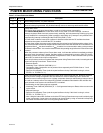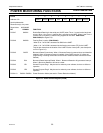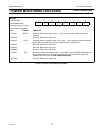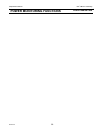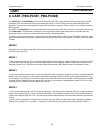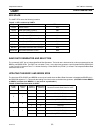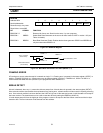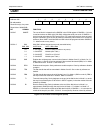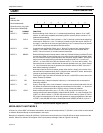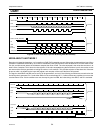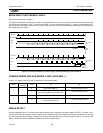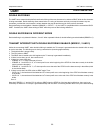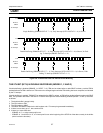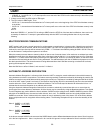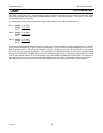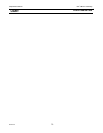
Philips Semiconductors
User’s Manual - Preliminary -
P89LPC906/907/908
UART
2003 Dec 8 63
Figure 8-4: Serial Port Status Register (SSTAT)
MORE ABOUT UART MODE 0
In Mode 0, a write to SBUF will initiate a transmission. At the end of the transmission, TI (SCON.1) is set, which must be cleared
in software. Double buffering must be disabled in this mode.
Reception is initiated by clearing RI (SCON.0). Synchronous serial transfer occurs and RI will be set again at the end of the
transfer. When RI is cleared, the reception of the next character will begin. Refer to Figure 8-5 for timing.
SSTAT
Address: BAh
Not bit addressable
Reset Source(s): Any reset
Reset Value: 00000000B
BIT SYMBOL FUNCTION
SSTAT.7 DBMOD Double buffering mode. When set = 1 enables double buffering. Must be ’0’ for UART
mode 0. In order to be compatible with existing 80C51 devices, this bit is reset to ’0’ to
disable double buffering.
SSTAT.6 INTLO Transmit interrupt position. When cleared = 0, the Tx interrupt is issued at the beginning
of the stop bit. When set =1, the Tx interrupt is issued at end of the stop bit. Must be ’0’
for mode 0. Note that in the case of single buffering, if the Tx interrupt occurs at the end
of a STOP bit, a gap may exist before the next start bit.
SSTAT.5 CIDIS Combined Interrupt Disable. When set = 1, Rx and Tx interrupts are separate. When
cleared = 0, the UART uses a combined Tx/Rx interrupt (like a conventional 80C51
UART). This bit is reset to ’0’ to select combined interrupts.
SSTAT.4 DBISEL Double buffering transmit interrupt select. Used only if double buffering is enabled.This bit
controls the number of interrupts that can occur when double buffering is enabled. When
set, one transmit interrupt is generated after each character written to SBUF, and there is
also one more transmit interrupt generated at the beginning (INTLO = 0) or the end
(INTLO = 1) of the STOP bit of the last character sent (i.e., no more data in buffer). This
last interrupt can be used to indicate that all transmit operations are over. When cleared
= 0, only one transmit interrupt is generated per character written to SBUF. Must be ’0’
when double buffering is disabled.
Note that except for the first character written (when buffer is empty), the location of the
transmit interrupt is determined by INTLO. When the first character is written, the transmit
interrupt is generated immediately after SBUF is written.
SSTAT.3 FE Framing error flag is set when the receiver fails to see a valid STOP bit at the end of the
frame. Cleared by software.
SSTAT.2 BR Break Detect flag. A break is detected when any 11 consecutive bits are sensed low.
Cleared by software.
SSTAT.1 OE Overrun Error flag is set if a new character is received in the receiver buffer while it is still
full (before the software has read the previous character from the buffer), i.e., when bit 8
of a new byte is received while RI in SCON is still set. Cleared by software.
SSTAT.0 STINT Status Interrupt Enable. When set =1, FE, BR, or OE can cause an interrupt. The
interrupt used (vector address 0023h) is shared with RI (CIDIS = 1) or the combined TI/RI
(CIDIS = 0). When cleared = 0, FE, BR, OE cannot cause an interrupt. (Note: FE, BR, or
OE is often accompanied by a RI, which will generate an interrupt regardless of the state
of STINT). Note that BR can cause a break detect reset if EBRR (AUXR1.6) is set to ’1’.
76543210
DBMOD INTLO CIDIS DBISEL FE BR OE STINT



